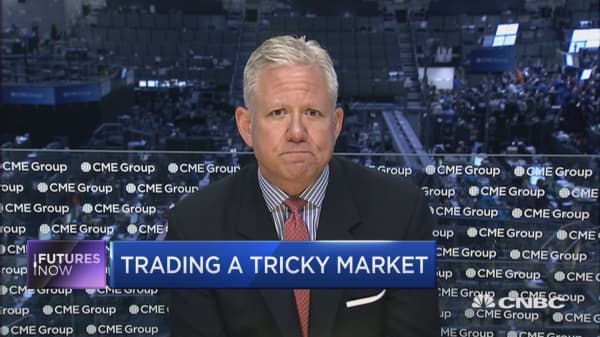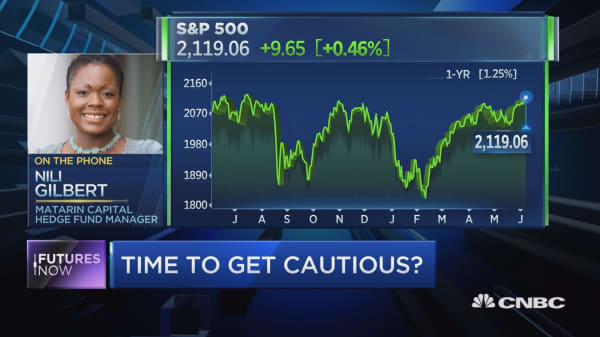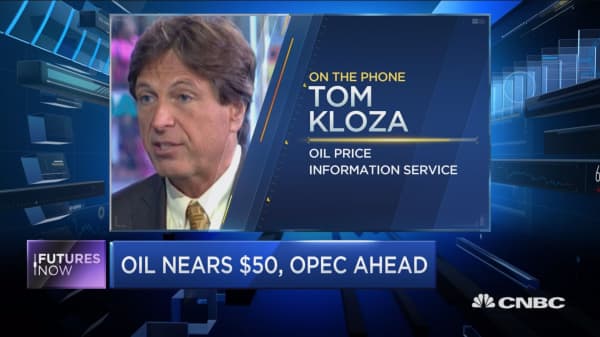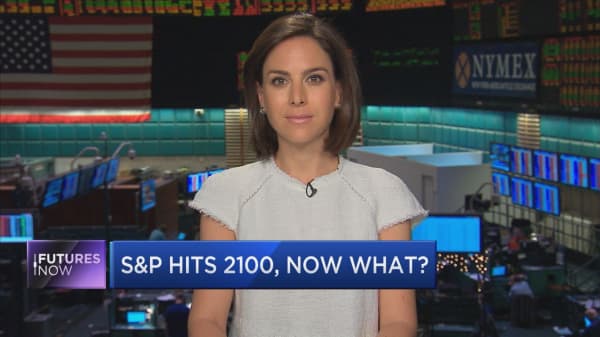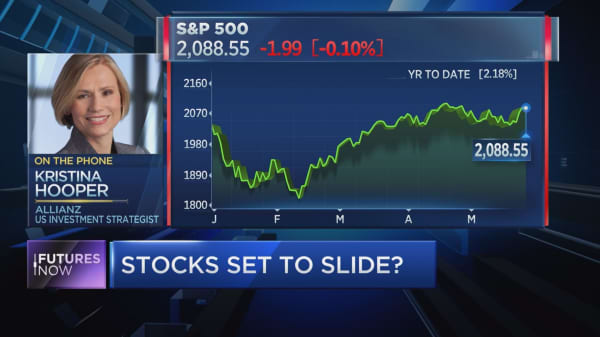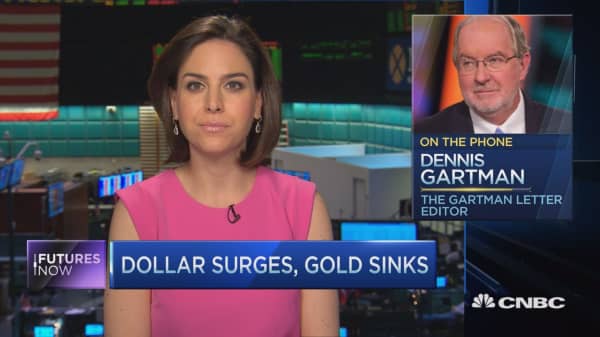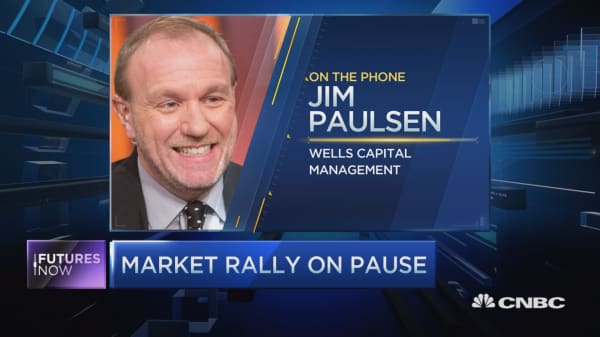Gold, crude, stocks and bonds are rallying in lockstep, and that has created a very tricky trading environment, according to one market watcher.
"I don't think any of this is easy to trade here," Scott Nations told CNBC's "Futures Now" on Thursday. "Everything seems to be tied to the dollar."
Nations said that while the stock market is tethered to a lesser degree to the dollar, oil remains a main driver for equities. "That means there's no way to pick out a unique setup that is moving on fundamentals and has some technical momentum we can take advantage of."
The market has seen explosive moves across many asset classes of late. In the last three weeks the S&P 500 gained more than 4 percent and climbed within a hair of its all-time high, while crude oil is up 7 percent in the same period, steadily trading above $50 for the first time since last July. These moves coupled with gold soaring more than 5 percent since the start of June and Treasurys sitting near year-to-date highs has Nations taking a second glance at the market.
"The fact that nearly everything is at or near a critical level" makes it difficult to trade, said the founder of NationsShares and a CNBC contributor. "It makes it like a coin flip, an expensive coin flip."
As a result of the unpredictability, Nations said he is reducing his positions and closing lower conviction trades right now.






